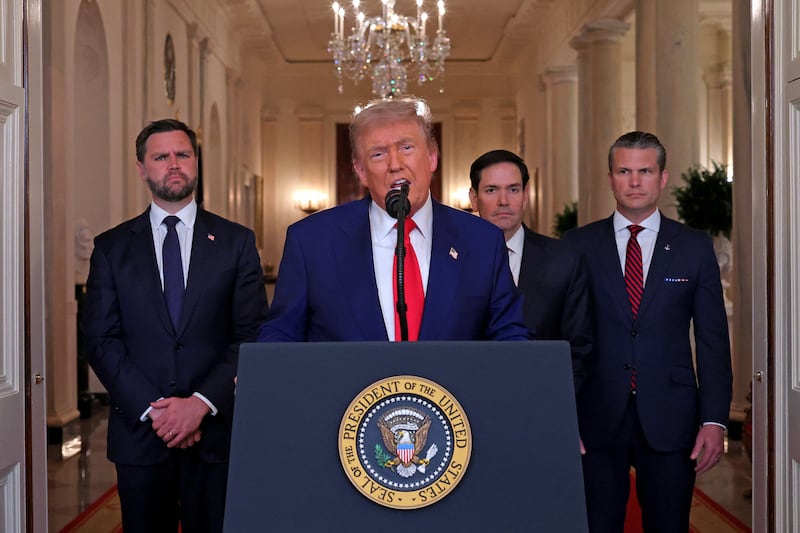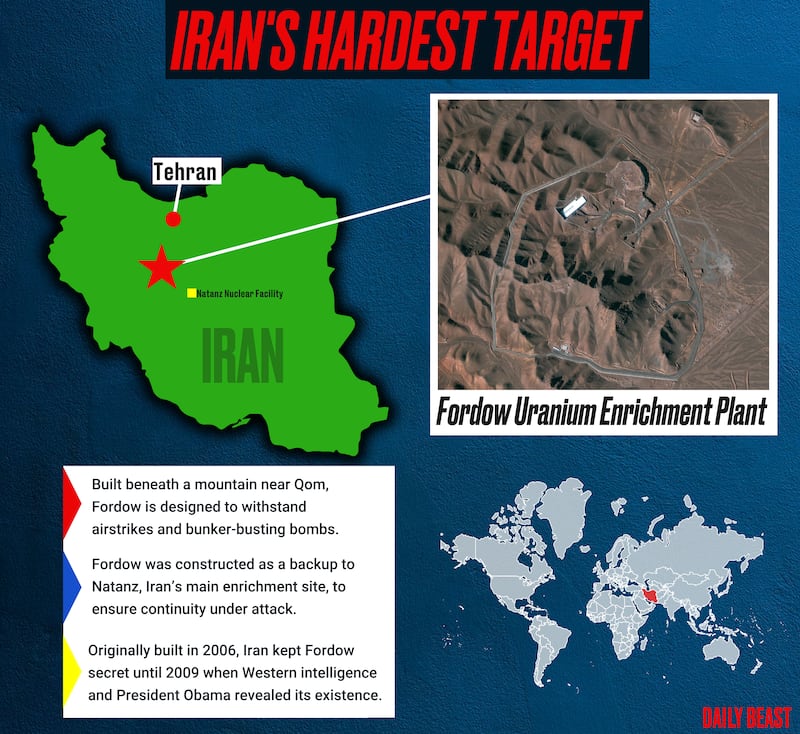Two of the three Iranian nuclear enrichment sites that the United States bombed in June could be operational again within a few months.
Despite President Donald Trump’s repeated insistence that the strikes had “obliterated” Iran’s nuclear program, the facilities in Natanz and Isfahan could resume nuclear enrichment in the next several months, sources told NBC News.
Only the nuclear facility in Fordow was mostly destroyed, setting back work by as much as two years, according to NBC.
Officials knew even before the strikes that the structures at Natanz and Isfahan were buried so deeply they were probably beyond the reach of even the massive “bunker buster” bomb capable of penetrating Fordow’s underground facilities, NBC reported.

The U.S. dropped the 30,000-pound GBU-57 bunker busters at Fordow and Natanz, but not at Isfahan, where officials relied on Tomahawk missiles to destroy surface targets.
In order to “truly decimate” Iran’s nuclear capabilities, Army Gen. Erik Kurilla, who heads U.S. Central Command, came up with an alternative plan that would have involved repeatedly hitting six sites, sources told NBC.
Trump decided not to greenlight the more extensive campaign, which would have lasted for several weeks and could have resulted in more deaths on both sides.
The “all-in” plan would have required targeting more of Iran’s air defense and ballistic missile systems, killing more Iranians and opening up Americans in Iraq and Syria to a greater threat of retaliation from Iran, according to NBC.
After being briefed on the plan, Trump—who campaigned on a promise to end foreign wars, not start them—decided to go with the more limited option in part because he was wary of involving the U.S. in a protracted military campaign overseas, sources said.
He has since claimed that Operation Midnight Hammer, as the strikes were called, accomplished in a single night what U.S. Central Command predicted would take weeks to achieve.
“We destroyed the nuclear,” Trump insisted in June. “Iran will not have nuclear. We blew it up. It’s blown up to kingdom come.”
His comments came a day after a leaked preliminary intelligence assessment from the Pentagon found that the bombings had sealed off the entrances to two of the enrichment facilities but had not collapsed the underground buildings.

The report also suggested that much of Iran’s stockpile of enriched uranium was moved before the strikes—a concern the United Nations’ nuclear watchdog also expressed.
The latest intelligence assessment found more damage than the original report, according to NBC, but not the total annihilation that the Trump administration has been claiming.
The intelligence-gathering process is expected to continue for months, with assessments likely to change over time.
“As the president has said and experts have verified, Operation Midnight Hammer totally obliterated Iran’s nuclear capabilities,” White House spokesperson Anna Kelly told NBC in a statement. “America and the world are safer thanks to his decisive action.”
Chief Pentagon spokesperson Sean Parnell also told NBC that all three of the bombed nuclear sites were “completely and totally obliterated” and called reports to the contrary “fake news.”
The Daily Beast has also reached out for comment.
Iran has said its nuclear program is purely for peaceful, civilian purposes, but it was enriching uranium at levels far above those required for domestic power generation. Still, investigators have not found evidence that the country was on the verge of creating a nuclear bomb when Trump authorized the strikes.
Late last month, Trump said he would “absolutely” and “without question” consider bombing Iran if reports suggested it could enrich uranium again.







